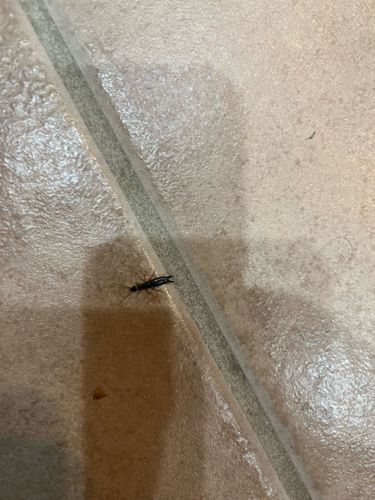Earwig
Scientific Name: Dermaptera (Order)
Order & Family: Dermaptera, various families (e.g., Forficulidae, Labiduridae)
Size: Typically 5-25 mm (0.2-1 inch) in length, though some tropical species can be larger.

Natural Habitat
Typically found in damp, cool, dark places such as under rocks, logs, leaf litter, mulch, potted plants, and sometimes indoors in basements, bathrooms, and crawl spaces.
Diet & Feeding
Omnivorous; they eat decaying plant matter, fungi, insects (like aphids and other small invertebrates), and sometimes live plants, fruits, and vegetables.
Behavior Patterns
Earwigs are primarily nocturnal, hiding in dark, moist places during the day and emerging at night to feed. They are known for their maternal care, with females often guarding their eggs and newly hatched nymphs. Some species can fly, though it's not a common behavior for all. They use their cerci for defense, catching prey, and even for folding their wings.
Risks & Benefits
Potential risks include being considered a minor nuisance or garden pest, as they can sometimes damage ornamental plants, fruits, and vegetables, especially when populations are high. They are generally harmless to humans, despite the myth they crawl into ears; they do not bite or sting. Potential benefits include contributing to decomposition of organic matter and acting as predators of other, more damaging garden pests like aphids.
Identified on: 8/20/2025